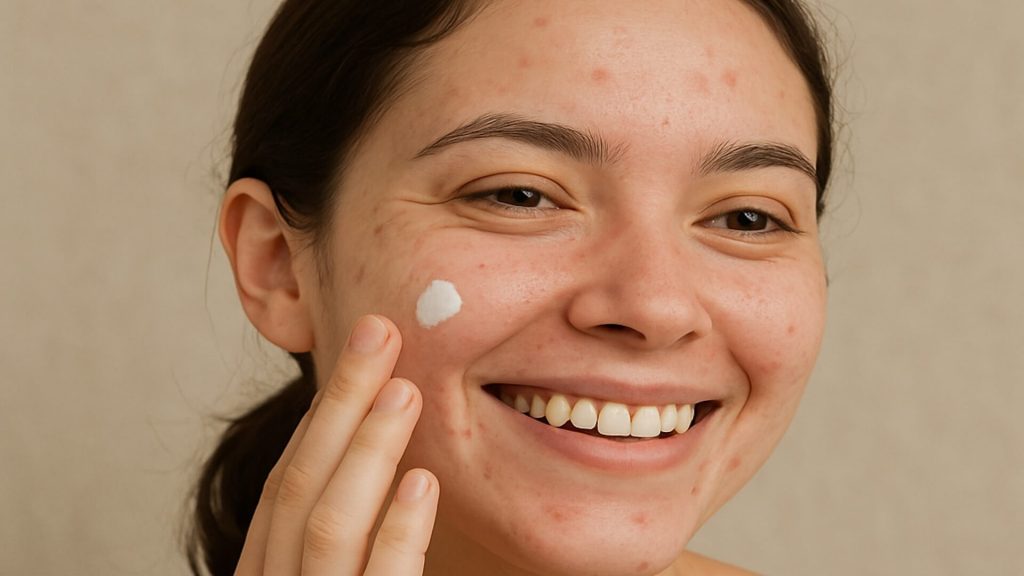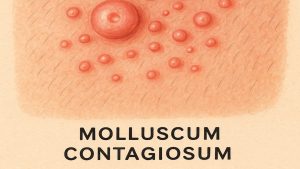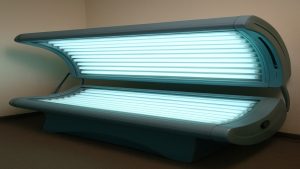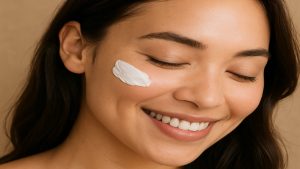- Adapalene reduces acne by speeding cell renewal
- Gentle, effective retinoid for clearer skin
- Improves skin texture and reduces inflammation
- Start slowly and moisturise for comfort
- Consistent use shows visible results in 8–12 weeks
Adapalene is a topical retinoid widely used to manage acne and improve overall skin texture. This vitamin A derivative helps support smoother, clearer skin through enhanced cell turnover and reduced inflammation. It is often recommended for individuals seeking targeted acne care with well-established clinical support.
This article examines adapalene’s evidence-based benefits, what to expect during use, and how to safely introduce it into a skincare routine.

What Is Adapalene & How It Works
Adapalene is a third-generation retinoid that regulates cell turnover and minimises inflammation, helping to manage acne-related symptoms. It is described in reviews as well tolerated and suitable for sensitive skin when used correctly [1].
How Adapalene Functions
Adapalene promotes healthy skin renewal by encouraging new cell growth while helping to prevent clogged pores. It also supports reduced redness and swelling linked to acne [1].
Comparing Retinol & Adapalene
Both adapalene and retinol are vitamin A derivatives but serve different purposes. Retinol is generally used for cosmetic ageing concerns, while adapalene is clinically indicated for acne.
| Ingredient | What It Is | Pros | Cons |
|---|---|---|---|
| Adapalene | Third-generation retinoid (0.1% OTC, 0.3% prescription). | Targets acne effectively, stable, gentler on skin. | May cause mild dryness early on. |
| Retinol | Over-the-counter vitamin A derivative. | Helps with signs of ageing, less irritating. | Less potent for acne, light-sensitive. |
| Tretinoin | Prescription-only first-generation retinoid. | Highly effective for both acne and wrinkles. | May cause irritation, less stable than adapalene. |
Table 1: Comparing common retinoids by use, benefits, and tolerability
How Adapalene Targets Acne & Improves Skin
Adapalene works by boosting cell turnover and helping prevent blocked pores, a key factor in acne development. A 2021 review reported a significant reduction in acne lesions within 12 weeks of consistent use [2].
Clearing Pores & Smoother Texture
Adapalene helps clear pores, promoting smoother skin over time. Studies report a reduction in mild acne spots by up to 47% in three months [5].
Calming Inflammation
Its anti-inflammatory effects can help reduce redness and swelling associated with acne [1].
What To Expect When Starting Adapalene
Mild irritation or dryness may appear during the first few weeks. These effects typically resolve as the skin adjusts. Dermatologists recommend starting with adapalene 0.1% every other night and using a gentle moisturiser to improve comfort [4].
Adjustment Period
Temporary redness or peeling can occur in the first month. These symptoms generally settle with continued, consistent use [8].
How To Build A Routine With Adapalene
- Cleanse: Use a gentle, non-foaming cleanser.
- Apply Adapalene: A pea-sized amount for the entire face.
- Moisturise: Use fragrance-free, non-comedogenic moisturiser.
- Sun Protection: Apply SPF 30+ daily.
After 2–4 weeks, increase to nightly use if tolerated [4].
| Tip | Action | Benefit |
|---|---|---|
| Start Slow | Apply every other night | Reduces irritation |
| Moisturise | Use gentle moisturiser after adapalene | Improves comfort |
| Use SPF | Apply daily sunscreen | Protects against sensitivity |
| Stay Consistent | Use for 8–12 weeks | Improves long-term results |
| Add Hydration | Combine with hyaluronic acid | Maintains skin balance |
Table 2: Practical guidance for using adapalene safely and effectively
Adapalene In The UK
In the UK, adapalene 0.1% is available over the counter, while 0.3% requires a prescription. Healthcare professionals can help assess suitability based on skin type and acne severity [1].
Choosing Between Cream & Gel
- Creams: Best for dry or sensitive skin, as they add hydration.
- Gels: Suit oily skin and absorb quickly with a matte finish.
Managing Side Effects
Common side effects include mild dryness, redness, or peeling in early use. These usually improve with moisturising and gentle cleansing [4]. Avoid combining adapalene with exfoliating acids during the initial phase to prevent irritation.
Long-Term Use & Skin Health
Regular use of adapalene can support clearer skin and smoother texture over time. Its role in long-term acne management is well established in clinical literature [1,2].
Before starting treatment, review your skin type and medical history with a healthcare professional. Consistent use and correct application maximise results while maintaining skin comfort.
Conclusion
Adapalene is a well-studied topical retinoid used to manage acne and improve skin texture. It enhances cell turnover, helps prevent clogged pores, and supports balanced, healthier skin.
Starting slowly and maintaining hydration ensures optimal comfort and effectiveness. For personalised prescription skincare, explore a free consultation with Monderma to see if adapalene suits your skin’s needs.
Content is for informational purposes only. Monderma treatments are prescribed following consultation. Results and timeframes can vary. Use as directed by your prescriber.
Bibliography
- Piskin, S., & Uzunali, E. (2007). A review of the use of adapalene for the treatment of acne vulgaris. Clinical, Cosmetic and Investigational Dermatology, 1, 129–134.
- Stuart, B., et al. (2021). Topical preparations for the treatment of mild-to-moderate acne vulgaris: systematic review and network meta-analysis. British Journal of Dermatology, 185(3), 512–525.
- Loss, M. J., et al. (2018). Adapalene 0.3% Gel Shows Efficacy for the Treatment of Atrophic Acne Scars. Dermatology and Therapy, 8(2), 245–257.
- Dosik, J. S., Homer, K., & Arsonnaud, S. (2005). Cumulative Irritation Potential of Adapalene 0.1% Cream and Gel Compared With Tretinoin Microsphere 0.04% and 0.1%. Cutis, 75(4), 238–243.
- Thiboutot, D., et al. (2006). Adapalene gel 0.3% for the treatment of acne vulgaris. Journal of the American Academy of Dermatology, 54(2), 242–250.
- Stein Gold, L., et al. (2016). Efficacy and Safety of Adapalene 0.3%/Benzoyl Peroxide 2.5% Gel in Moderate and Severe Acne. American Journal of Clinical Dermatology, 17(6), 595–604.
- Thielitz, A., Sidou, F., & Gollnick, H. (2007). Control of microcomedone formation with adapalene gel 0.1%. Journal of the European Academy of Dermatology and Venereology, 21(6), 747-753.
- Dunlap, F. E., et al. (1998). Adapalene 0.1% gel for acne vulgaris: superiority in tolerance and preference. British Journal of Dermatology, 139(Suppl 52), 17–22.
- Tan, J., et al. (2018). Fixed combination regimens of adapalene 0.1%/benzoyl peroxide 2.5% gel in acne vulgaris. European Journal of Dermatology, 28(4), 502–508.
- Khemani, U. N., Sharma, S., & Mehta, R. M. (2016). Clinical efficacy and safety of adapalene gel (0.1%) and tretinoin cream (0.025%) in acne. International Journal of Basic & Clinical Pharmacology, 5(3), 628–634.
Find your perfect skincare formula
Takes less than 2 minutes – see what your skin needs
Get Custom Formula













